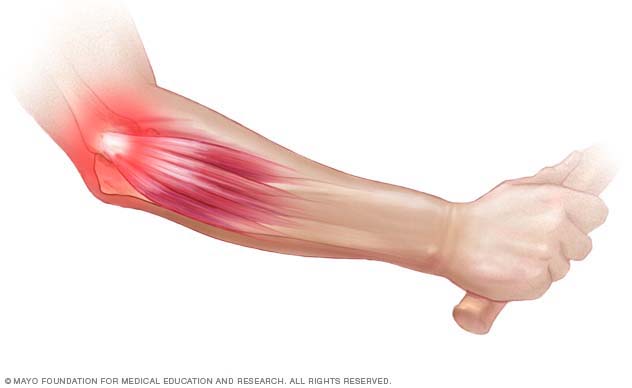
What is Tennis Elbow?
Tennis elbow, medically known as lateral epicondylitis, is a common condition where the tendons in your elbow become overloaded, usually due to repetitive movements of the wrist and arm. Despite the name, you don’t have to play tennis to develop this injury. Any repetitive activity that overuses the muscles and tendons of the forearm can lead to it.
Causes:
The primary cause of tennis elbow is repeated stress on the muscles and tendons that attach to the lateral epicondyle, the bony prominence on the outer side of the elbow. It often affects people whose jobs or hobbies involve repetitive arm movements, such as carpenters, painters, and even chefs.
Symptoms:
-Pain and tenderness on the outer part of the elbow
-Weak grip strength
-Pain that worsens when gripping, lifting, or twisting
Diagnosis:
Diagnosis is usually made through a physical examination, focusing on the symptoms and the range of motion of your elbow. In some cases, imaging tests like X-rays or MRI scans are used to rule out other conditions.

Treatment:
Rest and activity modification: Give your arm a break from the repetitive activity that caused the problem.
Physical therapy: Strengthening exercises for the forearm muscles can help.
Medications: Over-the-counter pain relievers and anti-inflammatory medications can ease the symptoms.
Braces: A brace or strap can reduce strain on the injured tendons.
Surgery: In rare cases, when conservative treatments fail, surgery may be considered.
Operative Management of Tennis Elbow:
In most cases, tennis elbow can be managed with non-surgical treatments, but when these options fail to relieve pain and restore function after 6 to 12 months, surgery may be considered. Surgical treatment is usually recommended for patients with severe or chronic tennis elbow that doesn't respond to conservative measures.
Open Surgery:
An incision is made over the elbow to allow direct access to the damaged tendon. The surgeon will remove the damaged tissue, sometimes reattaching the healthy tendon to the bone.

Post-Surgical Recovery:
Physical Therapy: Following surgery, physical therapy is crucial for regaining strength and flexibility in the elbow. A tailored rehabilitation program helps restore normal function while preventing future injuries.
Recovery Time: Full recovery from surgery can take anywhere from 3 to 6 months, depending on the type of surgery and individual healing capacity.
Return to Activity: After successful surgery and rehabilitation, most patients can return to their previous activities without pain. However, it's essential to avoid overusing the arm to prevent recurrence of the injury.
Surgery for tennis elbow has a high success rate, with most patients experiencing significant pain relief and improved function. However, as with any surgery, there are risks involved, including infection, nerve injury, or continued pain, which should be thoroughly discussed with your surgeon.
When to Consider Surgery:
If you've tried rest, physical therapy, medication, and bracing for over a year without success, surgery may offer relief. Each case is unique, so it's important to consult Dr. Fahad to determine if this option is right for you.


